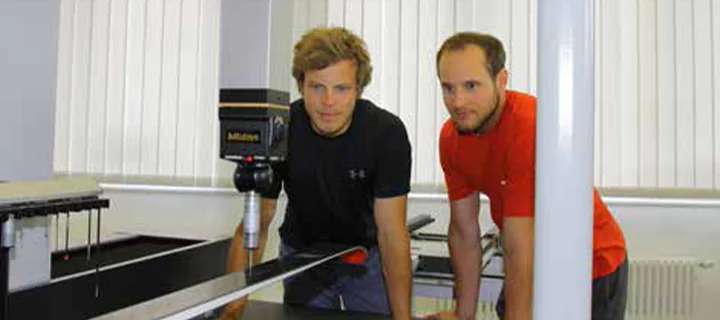- Nederlands, Belgique / België
- Česky, Česká republika
- Deutsch, Deutschland
- Español, España
- Português, Portugal
- English, Europe
- Français, France
- Italiano, Italia
- Magyar, Magyarország
- Nederlands, Nederland
- Deutsch, Österreich
- Polski, Polska
- Română, România
- Suisse / Schweiz / Svizzera
- Svenska, Sverige
- Suomeksi, Suomi
- Türkçe, Türkiye
- English, United Kingdom
- Slovenská, Slovak
-
Worldwide
- Kaikki: Poimintoja tuotteistamme
- QM-Fit
- SJ-220
- LEGEX Takumi
- QuantuMike
- STRATO-Active
- Crysta-Apex V
- MCOSMOS v5
- Formtracer Avant
- Measurlink® v10
- HR-600 -sarja
- MiSTAR 555
- QuickVision Pro
- TAGLENS
- Profiiliprojektori PJ Plus
- Kaikki: Tuotteita toimialoittain
- Ilmailuteollisuus
- Lääketeollisuus
- Autoteollisuus
- Energiateollisuus
- Valmistava teollisuus
- Elektroniikkateollisuus
- Asiakaskertomukset
- Kaikki: Käsimittalaitteet
- Työntömitat
- Mikrometrit & rakennemikrometrit
- Sisämittalaitteet
- Syvyysmittalaitteet
- Korkeusmittalaitteet
- Mittakellot & pikamittalaitteet
- Apuvälineet & tarvikkeet
- Kalibrointilaitteet
- Mittapalat
- Kaikki: Koordinaattimittauskoneet
- Pienet & keskikokoiset CMM:t
- Tuotantotilojen ja -linjojen CMM:t
- Suuret CMM:t
- Pyöröpöydät CMM
- Mittausanturit CMM
- Mittauskärjet
- Kiinnitinjärjestelmät
- Varusteet CMM
- Mittausohjelmistot CMM
- SmartMeasure-AL
- Kaikki: Videomittauskoneet
- Manuaalitoiminen 2D-videomittauskone QM-Fit
- Manuaalitoimiset videomittauskoneet Quick Image
- Manuaalitoimiset videomittauskoneet Quick Scope
- CNC-toimiset videomittauskoneet Quick Vision
- CNC-toimiset multisensor-videomittauskoneet Quick Vision
- CNC-toimiset videomittauskoneet mikrogeometrioille
- Videomittauskoneiden ohjelmistot
- Videomittauskoneiden varusteet
- Kiinnityskomponentit optisille järjestelmille
- Videomittauskoneiden mittakärjet ja varusteet
- Kaikki: Optiset mittauslaitteet
- Luupit
- Profiiliprojektorit
- Mittausmikroskoopit
- Mikroskooppiyksiköt
- Interferometriayksiköt - WLI
- Objektiivilinssit
- M2-ohjelmisto mikroskoopeille ja projektoreille
- TAGLENS
- Optisten laitteiden kiinnitinsarjat
- Kaikki: Muodonmittauskoneet
- Pinnankarheuden mittauslaitteet
- Muodonmittauskoneet
- Yhdistelmäkoneet pinnankarheus ja muodonmittaus
- Ympyrämäisyydenmittauskoneet
- Ohjelmistot FMI-koneille
- Kiinnityskomponentit muodonmittauskoneille
- Kaikki: Kovuudenmittauskoneet
- Kovuudenmittauskoneiden ohjelmistot
- Kannettavat kovuusmittarit
- Referenssipalat ja painimet
- Rockwell-mittauskoneet
- Vickers-mittauskoneet
- Micro-Vickers mittauskoneet
- Kaikki: Anturijärjestelmät
- Lineaarianturit
- Matalan mittausvoiman anturit
- Liityntä- ja väyläkomponentit
- Laser Scan Mikrometrit
- Surface Measure
- Ohjelmisto anturien hallintaan
- Kaikki: Pituudenmittausjärjestelmät
- DRO-pituudenmittausjärjestelmät Linear Scales & näyttöyksiköt
- NC-koneisiin Linear Scale -ratkaisut
- Rakennetyöntömitat ja mitta-asteikot
- Kaikki: Mittaustiedon hallinta
- Mittaustiedon hallinnan ohjelmistot
- Miniprosessorit
- Signaalikaapelit
- Langaton mittaustiedon siirto
- Rajapinnat ja muuntimet
- Ajastin, toleranssinäyttölaite, ym.
- Työntömitat
- Digitaaliset työntömitat
- Työntömitat erityistarkoituksiin
- Analogiset työntömitat
- Työntömittojen varusteet
- Mikrometrit & rakennemikrometrit
- Digitaaliset ja mekaaniset mikrometrit
- Mikrometrien varusteet
- Rakennemikrometrit
- Rakennemikrometrien varusteet
- Sisämittalaitteet
- Sisämikrometrit
- Sisämittalaitteet
- Sisämikrometrien & sisämittalaitteiden varusteet
- Syvyysmittalaitteet
- Syvyysmikrometrit
- Syvyystyöntömitat ja -mittalaitteet
- Syvyystyöntömittojen varusteet
- Korkeusmittalaitteet
- Korkeusmittalaitteet näyttöyksiköillä
- Korkeusmittalaitteet
- Korkeusmittalaitteiden varusteet
- Mittakellot & pikamittalaitteet
- Digitaaliset mittakellot
- Mittakellojen varusteet
- Analogiset vipumittakellot
- Analogiset mittakellot
- Mittakellojen varusteet
- Pikamittakellot ja paksuudenmittauslaitteet
- Apuvälineet & tarvikkeet
- Mittakellojen jalustat
- Tarkkuuspuristimet
- Graniittitasot
- Kulman mittaus ja suorakulmat
- Erikoismittalaitteet
- Mittapalat
- Mittapalasarjat teräksestä
- Mittapalat teräksestä
- Keraamiset mittapalasarjat
- Keraamiset mittapalat
- Erikoismittapalat
- ISO-mittapalojen varusteet
- Lisävarusteet mittapaloille
- Pienet & keskikokoiset CMM:t
- CRYSTA-Apex V - 500, 700, & 900 mallisarja
- CRYSTA-Apex V - 1200, 1600 & 2000 mallisarja
- CRYSTA-Apex EX mallisarja REVO-teknologialle
- STRATO-Active mallisarja
- STRATO-Apex - 500, 700, & 900 mallisarja
- STRATO-Apex - 1600 mallisarja
- LEGEX mallisarja
- Mittauskärjet
- Suorat mittakärjet
- Timanttipinnoitetut mittakärjet
- Timanttimittakärjet
- Kalibrointikuula
- Työstökoneiden mittakärjet
- Mittakärkien jatkot
- Ristikkokärjet
- Mittakärkien keskiöt
- Vaihdettavat ristikkokärjet
- Mittakärkien pitimet
- Mittakärkien adapterit
- Mittakärkien nivelletyt adapterit
- Lieriömittakärjet
- Lautasmittakärjet
- Mittakärki - Tip Styli
- Keskiöiden ruuvit
- Työkalut
- StyliCleaner - mittakärkien puhdistusasema
- Mittakärkisarjat
- Kiinnitinjärjestelmät
- Mittauskoneiden kiinnitinsarjat
- eco-fix palettijärjestelmä PRS
- Fixture Builder -ohjelmisto
- eco-fix laajennussarjat
- eco-fix komponentit
- Ruuvit ja työkalut
- Manuaalitoimiset videomittauskoneet Quick Scope
- Manuaalitoiminen Quick Scope
- Quick Scopen ohjelmisto
- CNC-toimiset videomittauskoneet Quick Vision
- Quick Vision ACTIVE
- Quick Vision APEX / HYPER
- Quick Vision ACCEL
- Quick Vision ULTRA
- Videomittauskoneiden varusteet
- Linssit ja kalibrointimatriisit
- QV-pyöröpöytä
- Varusteet kosketusanturimallia varten
- Kiinnityskomponentit optisille järjestelmille
- Optisten laitteiden opti-fix kiinnitinsarjat
- opti-fix -komponentit
- Ruuvit ja työkalut
- Videomittauskoneiden mittakärjet ja varusteet
- Suorat mittakärjet
- Mittakärkien jatkot
- Ristikkokärjet
- Mittakärkien keskiöt
- Vaihdettavat ristikkokärjet
- Mittakärkien pitimet
- Mittakärkien adapterit
- Mittakärkien nivelletyt adapterit
- Lieriömittakärjet
- Lautasmittakärjet
- Mittakärjet - Tip Styli
- Keskiöiden ruuvit
- Työkalut
- Mittakärkisarjat
- Profiiliprojektorit
- PJ-sarja
- PV-sarja
- PH-sarja
- Mittausdatan hallintayksikkö
- Lisävarusteet
- Tarkkuustarkistustyökalut
- Mittausmikroskoopit
- TM-sarja
- MF-sarja
- MF-U -sarja
- Valonlähteet
- Vision Unit -kamera
- QSPAK-VUE -ohjelmisto
- Mikroskooppien kamerat
- Objektiivilinssit
- ML-objektiivit
- Brightfield-objektiivit
- Brightfield/Darkfield -objektiivit
- NIR-objektiivit
- NIR LCD -objektiivit
- NUV-objektiivit
- NUV LCD -objektiivit
- UV-objektiivit
- UV LCD -objektiivit
- Optisten laitteiden kiinnitinsarjat
- Optisten laitteiden opti-fix kiinnitinsarjat
- opti-fix -komponentit
- Ruuvit ja työkalut
- Mittakärkisarjat
- Pinnankarheuden mittauslaitteet
- Surftest SJ-220
- Surftest SJ-310
- Surftest SJ-410
- Surftest SJ-500
- Surftest SV-2100
- Surftest SJ-500P
- Surftest SV-2100P
- Formtracer Avant FTA-S3000
- Surftest Extreme SV-3000CNC
- Surftest Extreme SV-M3000CNC
- Yhdistelmäkoneet pinnankarheus ja muodonmittaus
- Formtracer Avant FTA-D3000 / FTA-D4000
- Formtracer Avant FTA-H3000
- Formtracer Extreme SV-C4500CNC
- Formtracer Extreme SV-C4500CNC HYBRID Type 1
- Formtracer Extreme CS-5000CNC & CS-H5000CNC
- Kannettavat kovuusmittarit
- Kannettava Hardmatic HH-V400
- Digitaaliset ja analogiset mallit Durometers HARDMATIC HH-300
- Referenssipalat ja painimet
- Kovuudenmittauksen referenssipalat
- Kovuudenmittauksen painimet ja varaosat
- Rockwell-mittauskoneet
- Manuaalitoimiset Rockwell HR-sarja
- Puoliautomaattiset Rockwell HR-sarja
- Automaattiset Rockwell HR-sarja
- Vickers-mittauskoneet
- Manuaalitoimiset Vickersin mittauskoneet HV-sarja
- Puoliautomaattiset Vickersin mittauskoneet HV-sarja
- Automaattiset Vickersin mittauskoneet HV-sarja
- Micro-Vickers mittauskoneet
- Manuaalitoimiset Micro-Vickers kovuudenmittauskoneet HM-sarja
- Puoliautomaattiset Micro-Vickers kovuudenmittauskoneet HM-sarja
- Automaattiset Micro-Vickers kovuudenmittauskoneet HM-sarja
- Lineaarianturit
- ABSOLUTE Digimatic Linear Gauge LGS-sarja
- Paineilmatoimiset nostimet
- Linear Gauge LG100-sarja
- Linear Gauge LG200 Series
- Linear Gauge LG-sarja
- Laser Hologauge
- Liityntä- ja väyläkomponentit
- EJ-liityntäyksikkö ja väyläkomponentit lineaariantureille
- EC-liityntäyksikkö lineaariantureille
- EG-liityntäyksikkö lineaariantureille
- EH-liityntäyksikkö lineaariantureille
- EV-liityntäyksikkö lineaariantureille
- Näyttöyksikkö EV-liityntäyksikölle
- DRO-pituudenmittausjärjestelmät Linear Scales & näyttöyksiköt
- DRO Linear Scales AT103-sarja
- DRO Linear Scales AT103 - Korkean tarkkuuden asteikot
- DRO Linear Scales AT113-sarja
- DRO Linear Scales AT113 - Korkean tarkkuuden asteikot
- DRO ABS Linear Scales AT715-sarja
- KA-200 näyttöyksiköt Linear Scale -tuotteille
- NC-koneisiin Linear Scale -ratkaisut
- NC Linear Scales ST36
- NC Linear Scales ST46-EZA
- NC Linear Scales ABS ST700
- NC Linear Scales ABS ST1300
- NC Linear Scales AT211
- NC Linear Scales ABS AT1100
- NC Linear Scales ABS AT1300
- Rakennetyöntömitat ja mitta-asteikot
- Horizontal ABSOLUTE Scale jäähdytysnesteen kestävä malli IP66
- Horizontal ABSOLUTE Scale vakiomalli
- Horizontal ABSOLUTE Scale mittaussuunnan vaihtomahdollisuudella
- Horizontal ABSOLUTE Scale halkaisijatoiminnallisuudella
- Vertical ABSOLUTE Scale vakiomalli
- Vertical ABSOLUTE Scale mittaussuunnan vaihtomahdollisuudella
- Vertical ABSOLUTE Scale halkaisijatoiminnallisuudella
- Signaalikaapelit
- USB Input Tool Direct (Digimatic-USB)
- Digimatic-datakaapelit
- Digimatic-jatkokaapelit
- Langaton mittaustiedon siirto
- Langaton mittaustiedon siirto U-WAVE
- U-WAVE Bluetooth
- U-WAVE-T kaapelit ja lähettimet
 Ilmailuteollisuus
Ilmailuteollisuus
Monimutkaiset ilmailuteollisuuden sovellukset vaativat nopeaa ja äärimmäisen tarkkaa laadunvalvontaa tarkkojen osien ja kokoonpanojen varmistamiseksi. Katso, miten Mitutoyo tekee tämän mahdolliseksi.
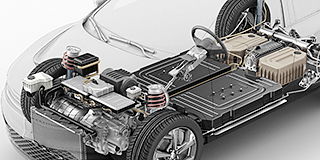 Autoteollisuus
Autoteollisuus
Autoteollisuus jatkaa innovatiivista kehitystään ja Mitutoyo tarjoaa edistyneitä tarkastus- ja skannausominaisuuksia auttamaan valmistajia saavuttamaan laadukkaan valmistusprosessin.
 Energiateollisuus
Energiateollisuus
Mitutoyon mittaus- ja analysointiratkaisut on suunniteltu auttamaan energianteollisuuden yrityksiä parantamaan luotettavuutta ja lisäämään laitteistojen käyttöaikaa.
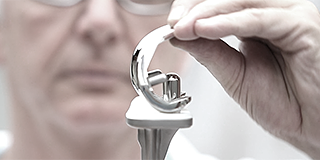 Lääketeollisuus
Lääketeollisuus
Potilaiden hyvinvoinnin suojelemiseksi lääketieteelliset sovellukset vaativat poikkeuksellista tarkkuutta. Lue lisää, että miten perusteellisesti testatut ratkaisut Mitutoyolta voivat auttaa lääketieteellisissä sovelluksissa.
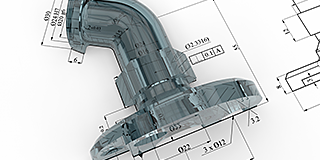 Valmistava teollisuus
Valmistava teollisuus
Varmista tarkkuus, korkea toistettavuus ja laadunvalvonnan prosessit Mitutoyon muodon- ja ympyrämäisyydenmittauskoneilla, koordinaattimittauskoneilla ja muilla mittausratkaisuilla.
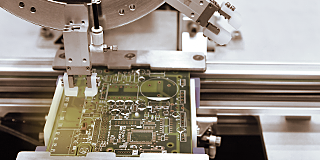 Elektroniikkateollisuus
Elektroniikkateollisuus
Mitutoyon kosketuksettomat mittausmenetelmät sekä videomittauskoneiden mittausratkaisut tuovat mikroskooppista tarkkuutta pienempiin ja haastavimpiin elektronisiin komponentteihin.
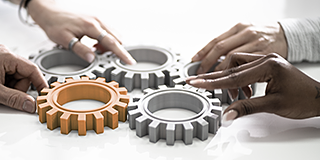 OEM-valmistus
OEM-valmistus
Mitutoyo OEM-tuotteet voivat korjata puuttuvan asiantuntemuksen tai resursseja toimittamalla sinulle arvostettuja metrologiatuotteitamme, jotka integroituvat saumattomasti tuotteisiisi.
 Asiakaskertomukset
Asiakaskertomukset
Yleiskuvan saamiseksi Mitutoyon kyvykkyyksistä ja luotettavuudesta ei ole parempaa paikkaa kuin upea kokoelma asiakaskertomuksia.
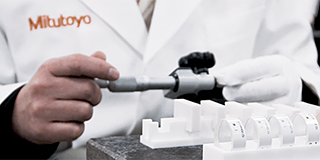 Akkreditoidut kalibrointipalvelut
Akkreditoidut kalibrointipalvelut
Mitutoyolta akkreditoidut kalibrointipalvelut CNC-toimisille mittauskoneille.
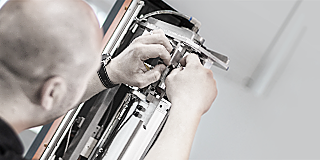 Kalibrointisopimukset mittauskoneille
Kalibrointisopimukset mittauskoneille
Varmista mittauskoneesi säännöllinen kalibrointi ja huolto kalibrointisopimuksella.
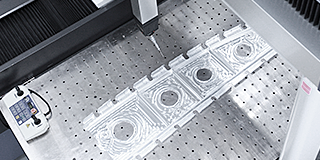 Mittaus- ja ohjelmointipalvelut
Mittaus- ja ohjelmointipalvelut
Mittauspalvelua sekä mitattavien kappaleiden ohjelmointia saatavilla asiantuntijapalveluina.
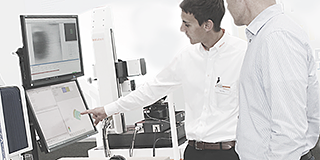 Tuotteiden esittelyt ja testimittaukset
Tuotteiden esittelyt ja testimittaukset
Paikan päällä näyttelytiloissamme tai esittely etänä ja saat ammattitaitoisen esittelyn tuotteistamme.
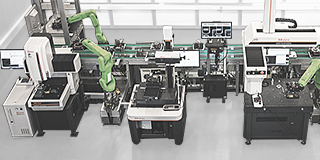 Mittauskoneet automaatiojärjestelmissä
Mittauskoneet automaatiojärjestelmissä
Muuta tehtaasi älykkääksi tehtaaksi Mitutoyon automaatioratkaisujen avulla.
 Mitutoyon räätälöidyt ratkaisut
Mitutoyon räätälöidyt ratkaisut
MGT:n ja KOMEG:n palveluiden avulla erikoislaitetoimitukset avaimet käteen -periaatteella.
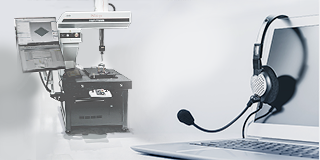 IT-tuki
IT-tuki
Täydellinen ja vaivaton asennus sekä integraatio IT-infrastruktuuriisi.
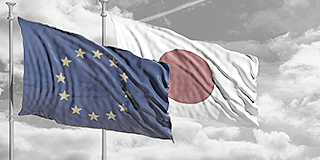 Mitutoyo Japan Desk
Mitutoyo Japan Desk
The first stop for Japanese companies operating in Europe
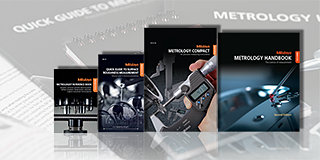 Oppaita ja postereita
Oppaita ja postereita
Täydellinen valinta työpaikalle tai luokkahuoneeseen. Mitutoyon julisteet ja oppimateriaalit ovat korvaamattomia apuvälineitä metrologian opiskelussa
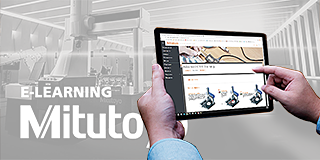 E-Learning
E-Learning
Hyödynnä Mitutoyon E-Learning koulutuskurssejamme, jotka tarjoavat mahdollisuuden lisätä metrologista osaamistasi sekä yritysten työntekijöiden ja organisaation tietämystä mittausteknologiasta.
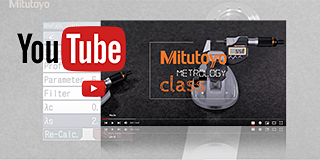 Opetusvideoita
Opetusvideoita
Jos etsit nopeaa tapaa oppia lisää mittauksesta, tutustu kattavaan opetusvideoiden tarjontaamme.
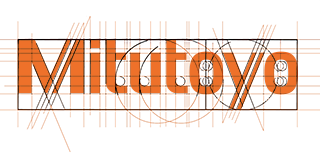 Tutustu Mitutoyoon
Tutustu Mitutoyoon
Mitutoyo on maailman suurimpia metrologia-alan toimijoita
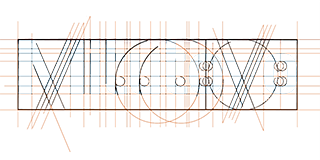 Uramahdollisuudet Mitutoyolla
Uramahdollisuudet Mitutoyolla
Lue lisää millaista on työskennellä Mitutoyolla ja mitkä voisivat olla seuraavat askeleet urasi aloittamiseksi täällä
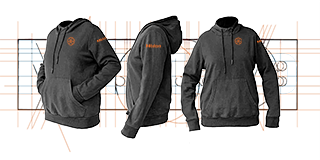 Merchandising
Merchandising
The popular destination for high-quality Mitutoyo apparel and more!
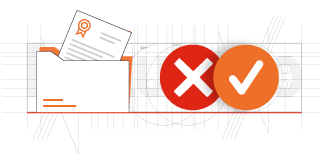 Sertifikaatit ja laillisuus
Sertifikaatit ja laillisuus
Tässä voit tutustua sertifikaatteihimme, akkreditointeihimme ja laillisuuteemme varmistaaksesi luotettavat ja varmennetut palvelut.
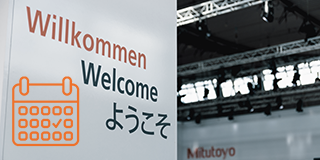 Tapahtumat
Tapahtumat
Pysy ajan tasalla tapahtumista ympäri Eurooppaa ja poikkea katsomaan, mitä uutta Mitutoyolta löytyy.
 Kampanjat ja promootiot
Kampanjat ja promootiot
Tarkista ja katso, että mitkä suosikkituotteesi ovat alennuksessa parhaaseen hintaan.
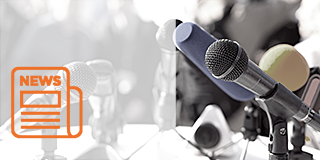 Lehdistö - Press area
Lehdistö - Press area
Tarkista viimeisimmät uutiset, päivitykset ja resurssit.
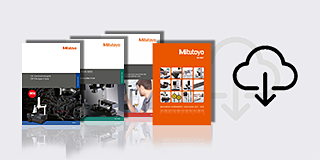 Tuote-esitteitä
Tuote-esitteitä
Katso ja lataa katalogimme, tuote-esitteet ja paljon muuta.
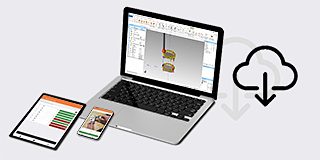 Ohjelmistot ja ajurit
Ohjelmistot ja ajurit
Lataa ohjelmistoja, päivityksiä ja ajureita helposti ja kätevästi.
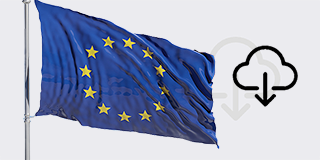 Vaatimustenmukaisuusvakuutukset
Vaatimustenmukaisuusvakuutukset
Täältä voit ladata täydet versiot EU:lle
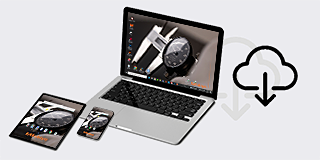 Ladattavia taustakuvia
Ladattavia taustakuvia
Lataa Mitutoyon virallisia taustakuvia tietokoneelle ja muihin laitteisiin ilmaiseksi
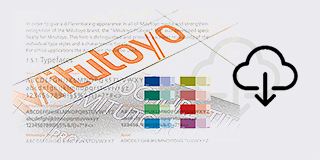 Mitutoyo brändi- ja viestintämateriaalit
Mitutoyo brändi- ja viestintämateriaalit
Resursseja Mitutoyon henkilöstölle ja ulkoisille toimittajille
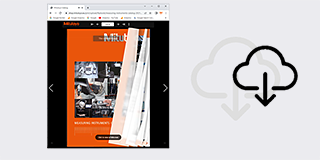 Verkkoluettelomme - Online Catalog
Verkkoluettelomme - Online Catalog
Tutustu laajaan tuotevalikoimaamme verkkoluettelossamme!
-
Tuotteet
- Takaisin Tuotteet
- Tuotteet
- Poimintoja tuotteistamme
- Tuotteita toimialoittain
-
Käsimittalaitteet
- Takaisin Käsimittalaitteet Kaikki: Käsimittalaitteet
- Työntömitat
-
Mikrometrit & rakennemikrometrit
- Takaisin Mikrometrit & rakennemikrometrit Mikrometrit & rakennemikrometrit
- Digitaaliset ja mekaaniset mikrometrit
- Mikrometrien varusteet
- Rakennemikrometrit
- Rakennemikrometrien varusteet
- Sisämittalaitteet
- Syvyysmittalaitteet
- Korkeusmittalaitteet
- Mittakellot & pikamittalaitteet
- Apuvälineet & tarvikkeet
-
Kalibrointilaitteet
- Takaisin Kalibrointilaitteet Kalibrointilaitteet
- Pystymalliset porrasmittapalat
- Porrasmittapalat
- Kalibrointilaitteet
- Mittapalat
-
Koordinaattimittauskoneet
- Takaisin Koordinaattimittauskoneet Kaikki: Koordinaattimittauskoneet
-
Pienet & keskikokoiset CMM:t
- Takaisin Pienet & keskikokoiset CMM:t Pienet & keskikokoiset CMM:t
- CRYSTA-Apex V - 500, 700, & 900 mallisarja
- CRYSTA-Apex V - 1200, 1600 & 2000 mallisarja
- CRYSTA-Apex EX mallisarja REVO-teknologialle
- STRATO-Active mallisarja
- STRATO-Apex - 500, 700, & 900 mallisarja
- STRATO-Apex - 1600 mallisarja
- LEGEX mallisarja
-
Tuotantotilojen ja -linjojen CMM:t
- Takaisin Tuotantotilojen ja -linjojen CMM:t Tuotantotilojen ja -linjojen CMM:t
- MACH Ko-ga-me
- MACH 3A 653
- MACH V 9106
- MiSTAR 555
-
Suuret CMM:t
- Takaisin Suuret CMM:t Suuret CMM:t
- STRATO-Apex G
- CARB-mallisarja
-
Pyöröpöydät CMM
- Takaisin Pyöröpöydät CMM Pyöröpöydät CMM
- MRT240 pyöröpöytä
- MRT320 pyöröpöytä
-
Mittausanturit CMM
- Takaisin Mittausanturit CMM Mittausanturit CMM
-
SurfaceMeasure
- REVO
- SP80
- TP7M
-
Mittauskärjet
- Takaisin Mittauskärjet Mittauskärjet
- Suorat mittakärjet
- Timanttipinnoitetut mittakärjet
- Timanttimittakärjet
- Kalibrointikuula
- Työstökoneiden mittakärjet
- Mittakärkien jatkot
- Ristikkokärjet
- Mittakärkien keskiöt
- Vaihdettavat ristikkokärjet
- Mittakärkien pitimet
- Mittakärkien adapterit
- Mittakärkien nivelletyt adapterit
- Lieriömittakärjet
- Lautasmittakärjet
- Mittakärki - Tip Styli
- Keskiöiden ruuvit
- Työkalut
- StyliCleaner - mittakärkien puhdistusasema
- Mittakärkisarjat
- Kiinnitinjärjestelmät
-
Varusteet CMM
- Takaisin Varusteet CMM Varusteet CMM
-
Mittauskoneille suojarakenteet
- Turvavarusteet
-
Mittausohjelmistot CMM
- Takaisin Mittausohjelmistot CMM Mittausohjelmistot CMM
- MiCAT Planner
- MCOSMOS
- MAFIS Express
- MSURF
- GEARPAK EXPRESS
- SmartMeasure-AL
-
Videomittauskoneet
- Takaisin Videomittauskoneet Kaikki: Videomittauskoneet
- Manuaalitoiminen 2D-videomittauskone QM-Fit
-
Manuaalitoimiset videomittauskoneet Quick Image
- Takaisin Manuaalitoimiset videomittauskoneet Quick Image Manuaalitoimiset videomittauskoneet Quick Image
- Quick Image
- Quick Imagen ohjelmisto
-
Manuaalitoimiset videomittauskoneet Quick Scope
- Takaisin Manuaalitoimiset videomittauskoneet Quick Scope Manuaalitoimiset videomittauskoneet Quick Scope
- Manuaalitoiminen Quick Scope
- Quick Scopen ohjelmisto
-
CNC-toimiset videomittauskoneet Quick Vision
- Takaisin CNC-toimiset videomittauskoneet Quick Vision CNC-toimiset videomittauskoneet Quick Vision
- Quick Vision ACTIVE
- Quick Vision APEX / HYPER
- Quick Vision ACCEL
- Quick Vision ULTRA
-
CNC-toimiset multisensor-videomittauskoneet Quick Vision
- Takaisin CNC-toimiset multisensor-videomittauskoneet Quick Vision CNC-toimiset multisensor-videomittauskoneet Quick Vision
- Quick Vision Hybrid
- Quick Vision WLI
-
CNC-toimiset videomittauskoneet mikrogeometrioille
- Takaisin CNC-toimiset videomittauskoneet mikrogeometrioille CNC-toimiset videomittauskoneet mikrogeometrioille
- UMAP-videomittauskone
- UMAP-ohjelmisto
-
Videomittauskoneiden ohjelmistot
- Takaisin Videomittauskoneiden ohjelmistot Videomittauskoneiden ohjelmistot
- QVPAK-ohjelmisto
- QSPAK-ohjelmisto
- QIPAK-ohjelmisto
-
Videomittauskoneiden varusteet
- Takaisin Videomittauskoneiden varusteet Videomittauskoneiden varusteet
- Linssit ja kalibrointimatriisit
- QV-pyöröpöytä
- Varusteet kosketusanturimallia varten
-
Kiinnityskomponentit optisille järjestelmille
- Takaisin Kiinnityskomponentit optisille järjestelmille Kiinnityskomponentit optisille järjestelmille
- Optisten laitteiden opti-fix kiinnitinsarjat
- opti-fix -komponentit
- Ruuvit ja työkalut
-
Videomittauskoneiden mittakärjet ja varusteet
- Takaisin Videomittauskoneiden mittakärjet ja varusteet Videomittauskoneiden mittakärjet ja varusteet
- Suorat mittakärjet
- Mittakärkien jatkot
- Ristikkokärjet
- Mittakärkien keskiöt
- Vaihdettavat ristikkokärjet
- Mittakärkien pitimet
- Mittakärkien adapterit
- Mittakärkien nivelletyt adapterit
- Lieriömittakärjet
- Lautasmittakärjet
- Mittakärjet - Tip Styli
- Keskiöiden ruuvit
- Työkalut
- Mittakärkisarjat
-
Optiset mittauslaitteet
- Takaisin Optiset mittauslaitteet Kaikki: Optiset mittauslaitteet
- Luupit
- Profiiliprojektorit
- Mittausmikroskoopit
-
Mikroskooppiyksiköt
- Takaisin Mikroskooppiyksiköt Mikroskooppiyksiköt
- Mikroskooppiyksiköt FS70-sarja
- Mikroskooppiyksiköt VMU-sarja
- Interferometriayksiköt - WLI
- Objektiivilinssit
- M2-ohjelmisto mikroskoopeille ja projektoreille
- TAGLENS
-
Optisten laitteiden kiinnitinsarjat
- Takaisin Optisten laitteiden kiinnitinsarjat Optisten laitteiden kiinnitinsarjat
- Optisten laitteiden opti-fix kiinnitinsarjat
- opti-fix -komponentit
- Ruuvit ja työkalut
- Mittakärkisarjat
-
Muodonmittauskoneet
- Takaisin Muodonmittauskoneet Kaikki: Muodonmittauskoneet
- Pinnankarheuden mittauslaitteet
-
Muodonmittauskoneet
- Takaisin Muodonmittauskoneet Muodonmittauskoneet
- Contracer CV-2100
- Formtracer Avant FTA-C3000 and FTA-C4000
- Yhdistelmäkoneet pinnankarheus ja muodonmittaus
-
Ympyrämäisyydenmittauskoneet
- Takaisin Ympyrämäisyydenmittauskoneet Ympyrämäisyydenmittauskoneet
- Roundtest
- Roundtracer
-
Ohjelmistot FMI-koneille
- Takaisin Ohjelmistot FMI-koneille Ohjelmistot FMI-koneille
- Formtracepak
- Roundpak
- MCubeMap V9
-
Kiinnityskomponentit muodonmittauskoneille
- Takaisin Kiinnityskomponentit muodonmittauskoneille Kiinnityskomponentit muodonmittauskoneille
- eco-fix FMI-sarjat
-
Kovuudenmittauskoneet
- Takaisin Kovuudenmittauskoneet Kaikki: Kovuudenmittauskoneet
-
Kovuudenmittauskoneiden ohjelmistot
- Takaisin Kovuudenmittauskoneiden ohjelmistot Kovuudenmittauskoneiden ohjelmistot
- AVPAK-ohjelmisto
- Kannettavat kovuusmittarit
-
Referenssipalat ja painimet
- Takaisin Referenssipalat ja painimet Referenssipalat ja painimet
- Kovuudenmittauksen referenssipalat
- Kovuudenmittauksen painimet ja varaosat
- Rockwell-mittauskoneet
- Vickers-mittauskoneet
- Micro-Vickers mittauskoneet
-
Anturijärjestelmät
- Takaisin Anturijärjestelmät Kaikki: Anturijärjestelmät
- Lineaarianturit
-
Matalan mittausvoiman anturit
- Takaisin Matalan mittausvoiman anturit Matalan mittausvoiman anturit
- Motorisoitu matalan mittausvoiman tarkkuusmittalaite LITEMATIC VL-50
-
Liityntä- ja väyläkomponentit
- Takaisin Liityntä- ja väyläkomponentit Liityntä- ja väyläkomponentit
- EJ-liityntäyksikkö ja väyläkomponentit lineaariantureille
- EC-liityntäyksikkö lineaariantureille
- EG-liityntäyksikkö lineaariantureille
- EH-liityntäyksikkö lineaariantureille
- EV-liityntäyksikkö lineaariantureille
- Näyttöyksikkö EV-liityntäyksikölle
-
Laser Scan Mikrometrit
- Takaisin Laser Scan Mikrometrit Laser Scan Mikrometrit
- LSM mittausyksiköt
- LSM liityntäyksiköt
- LSM väyläyksiköt
- LSM lisävarusteet
- Surface Measure
- Ohjelmisto anturien hallintaan
-
Pituudenmittausjärjestelmät
- Takaisin Pituudenmittausjärjestelmät Kaikki: Pituudenmittausjärjestelmät
-
DRO-pituudenmittausjärjestelmät Linear Scales & näyttöyksiköt
- Takaisin DRO-pituudenmittausjärjestelmät Linear Scales & näyttöyksiköt DRO-pituudenmittausjärjestelmät Linear Scales & näyttöyksiköt
- DRO Linear Scales AT103-sarja
- DRO Linear Scales AT103 - Korkean tarkkuuden asteikot
- DRO Linear Scales AT113-sarja
- DRO Linear Scales AT113 - Korkean tarkkuuden asteikot
- DRO ABS Linear Scales AT715-sarja
- KA-200 näyttöyksiköt Linear Scale -tuotteille
- NC-koneisiin Linear Scale -ratkaisut
-
Rakennetyöntömitat ja mitta-asteikot
- Takaisin Rakennetyöntömitat ja mitta-asteikot Rakennetyöntömitat ja mitta-asteikot
- Horizontal ABSOLUTE Scale jäähdytysnesteen kestävä malli IP66
- Horizontal ABSOLUTE Scale vakiomalli
- Horizontal ABSOLUTE Scale mittaussuunnan vaihtomahdollisuudella
- Horizontal ABSOLUTE Scale halkaisijatoiminnallisuudella
- Vertical ABSOLUTE Scale vakiomalli
- Vertical ABSOLUTE Scale mittaussuunnan vaihtomahdollisuudella
- Vertical ABSOLUTE Scale halkaisijatoiminnallisuudella
-
Mittaustiedon hallinta
- Takaisin Mittaustiedon hallinta Kaikki: Mittaustiedon hallinta
-
Mittaustiedon hallinnan ohjelmistot
- Takaisin Mittaustiedon hallinnan ohjelmistot Mittaustiedon hallinnan ohjelmistot
- MeasurLink 10
- USB-ITPAK
-
Miniprosessorit
- Takaisin Miniprosessorit Miniprosessorit
- Digimatic miniprosessori DP-1VA LOGGER
- Signaalikaapelit
-
Langaton mittaustiedon siirto
- Takaisin Langaton mittaustiedon siirto Langaton mittaustiedon siirto
- Langaton mittaustiedon siirto U-WAVE
- U-WAVE Bluetooth
- U-WAVE-T kaapelit ja lähettimet
- Rajapinnat ja muuntimet
-
Ajastin, toleranssinäyttölaite, ym.
- Takaisin Ajastin, toleranssinäyttölaite, ym. Ajastin, toleranssinäyttölaite, ym.
- Digimatic Timerbox
- Digimatic-jakolaite
-
Ohjelmistot
- Takaisin Ohjelmistot Kaikki: Ohjelmistot
-
Koordinaattimittauskoneiden ohjelmistot
- Takaisin Koordinaattimittauskoneiden ohjelmistot Koordinaattimittauskoneiden ohjelmistot
- MiCAT Planner
- MCOSMOS
- MAFIS-Express
- MSURF
-
Videomittauskoneiden ohjelmistot
- Takaisin Videomittauskoneiden ohjelmistot Videomittauskoneiden ohjelmistot
- QVPAK
- QSPAK
- QIPAK
-
FMI-koneiden ohjelmistot
- Takaisin FMI-koneiden ohjelmistot FMI-koneiden ohjelmistot
- Formtracepak
- Roundpak
- Kovuusmittakoneiden ohjelmistot
- Sensorpak-ohjelmisto
-
Mittaustiedon hallinnan ohjelmistot
- Takaisin Mittaustiedon hallinnan ohjelmistot Mittaustiedon hallinnan ohjelmistot
- Measurlink 10
- USB-ITPAK
-
Automaattiset mittauslaitteet
- Takaisin Automaattiset mittauslaitteet Kaikki: Automaattiset mittauslaitteet
- MDAutoUnit
- Toimialat
-
Palvelumme
- Takaisin Palvelumme
- Palvelumme
-
Koulutuspalvelut
- Takaisin Koulutuspalvelut
- Koulutuspalvelut
-
Akkreditoidut kalibrointipalvelut
- Takaisin Akkreditoidut kalibrointipalvelut
- Akkreditoidut kalibrointipalvelut
- Kalibrointisopimukset mittauskoneille
- Mittaus- ja ohjelmointipalvelut
- Tuotteiden esittelyt ja testimittaukset
- Mittauskoneet automaatiojärjestelmissä
- Mitutoyon räätälöidyt ratkaisut
- IT-tuki
- Mitutoyo Japan Desk
-
Koulutusmateriaali
- Takaisin Koulutusmateriaali
- Koulutusmateriaali
- Oppaita ja postereita
- E-Learning
- Opetusvideoita
- Tietoja meistä
-
Uutisia
- Takaisin Uutisia
- Uutisia
-
Tapahtumat
- Takaisin Tapahtumat
- Tapahtumat
-
Kampanjat ja promootiot
- Takaisin Kampanjat ja promootiot
- Kampanjat ja promootiot
- Lehdistö - Press area
- Lataukset
Fancier workpieces have rarely been measured by a coordinate measuring machine: Two Austrian students have been checking, as part of a student research project, the carving of GS (Giant Slalom) racing skis with a Mitutoyo Crysta-Apex S.
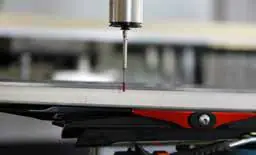
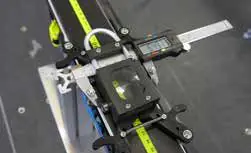
Their passion for the project is easy to see in Mario Lazzeri and Johannes Brunner, because the two Austrian students have devised a more than exotic theme for their student research project. They measure GS racing skis. Their goal is to find out whether the relatively simple method of measurement of the international ski federation, FIS, is feasible and provides realistic results, or not. To be exact, this has to do with the carving of the skis, i.e. the concavity of the ski edges. Modern “planks” are namely wider at the leading and trailing ends than in the middle. This special “carved” form facilitates and speeds up cornering - for both hobby skiers as well as for World Cup Professionals.
The FIS regulations stipulate an average radius of curve of at least 35 meters in the giant slalom. Although tighter radii comply with the dynamics they do, however, pose an increased risk of injury to the skier. Furthermore, the skis must be at least 1.95 meters long. The skis are measured in the developed length by the FIS with a steel measuring tape, the zero point of which is attached to the end of the ski.
The length of the ski is then measured from the narrowest point of the ski to the leading and trailing ends. In order that the entire ski waist radius is not distorted by the different geometries of the ski tails and ski tips, the rear ski width is measured for 90% of the rear ski length and the leading ski width for 80% of the front ski length. In order to determine the sidecut the width of the ski is measured – at predetermined points – using a movable device with a built-in sliding caliper. Using an integrated magnifying glass with a marking line, the measurement position can be read from the measuring tape. From this, the mean radius of the sidecut is calculated.
If the sidecut radius is found to be under the permitted limit after a single measurement, the measurement and calculation has to be repeated twice. From the thus determined three sidecut radii the arithmetic mean, XR, is generated. To allow for measurement errors in the length and the width the sidecut radius is defined as 1.015 XR. This corresponds to an average measurement error of 1.5%. 1.015 XR must be greater than or equal to the applicable radius limitation.
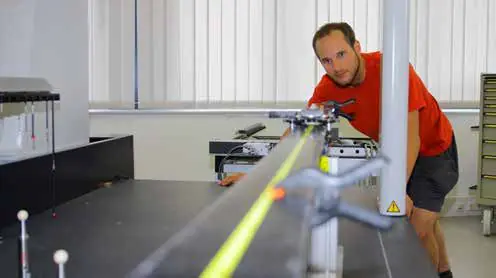
"Measuring with a caliper at different positions has enormous potential for error," said Lazzeri. "We want to know if the results are useful and reliable or not," says the trained machinist. Thus was born the idea for the student research project for the seminar "Problem Analysis in Biomechanics" at the Institute of Sports Sciences at the University of Innsbruck in Univ.-Prof. Mag. Dr. Werner Nachbauer.
The issue is dynamite, because a supposedly too small a radius may result in a disqualification by the FIS – and can result in a tremendous setback both sportswise and financially for the athlete and his team.
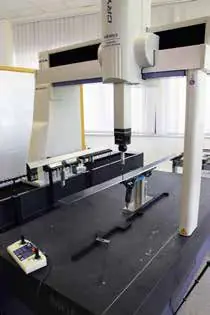
Since Lazzeri had worked half his life with Mitutoyo manual measurement tools, the 31-year-old knew that the Japanese are the benchmark worldwide in terms of dimensional metrology. A phone call was enough: Mitutoyo Austria was in on the party and supported the project with help and advice. The skis were measured in the Mitutoyo branch at Eisenach. Together with Mitutoyo engineer, Friedrich Schinko, the skis were harnessed to a coordinate measuring machine of the type Mitutoyo Crysta-Apex S 9168 with a tactile scanning probe SP25. To fix the skis on the granite working table of the Crysta the Austrians had specially converted a mount for ski bindings, similar to that used by the service staff to grind the steel edges.
After a pre-probing from above for each measuring point, the Crysta-Apex S executed the edge point measurement with a travel speed of 520 mm/s and a digital step of 0.1 microns, with a cylindrical stylus tip of four millimeters diameter. With the extremely powerful Mitutoyo CMM software MCOSMOS, Lazzeri, Brunner and Schinko collected and analysed the data, because MCOSMOS is ideal for this purpose with the universal geometry measurement program GEOPAK with macros for the automatic measurement of all control geometries and the 2D evaluation module SCANPAK.
The software depicted graphically every single one of the probe starting points together with all the relevant data. From all the individual data delivered by the Crysta-Apex S it was not only the overall radius of the ski that could be reliably calculated, but also the pretension of the ski, the tip radius, any form deviations of the overall radius and individual radii from at least 3 points in each case.
After two days of testing and a meticulous data analysis, the verdict of the students was made. With regard to the carving there are serious differences between the different racing skis. Within the limitations of the regulations every manufacturer is obviously trying, with his own design, to optimise the dynamic behavior of his skis. The FIS method of using calipers showed, with respect to a calculated average sidecut radius, no significant deviation from the measurement with the Mitutoyo Crysta-Apex S and thus serves its purpose. Statements about sidecut development cannot, however, thus be met. For this, measurement by coordinate metrology would be indispensable.




